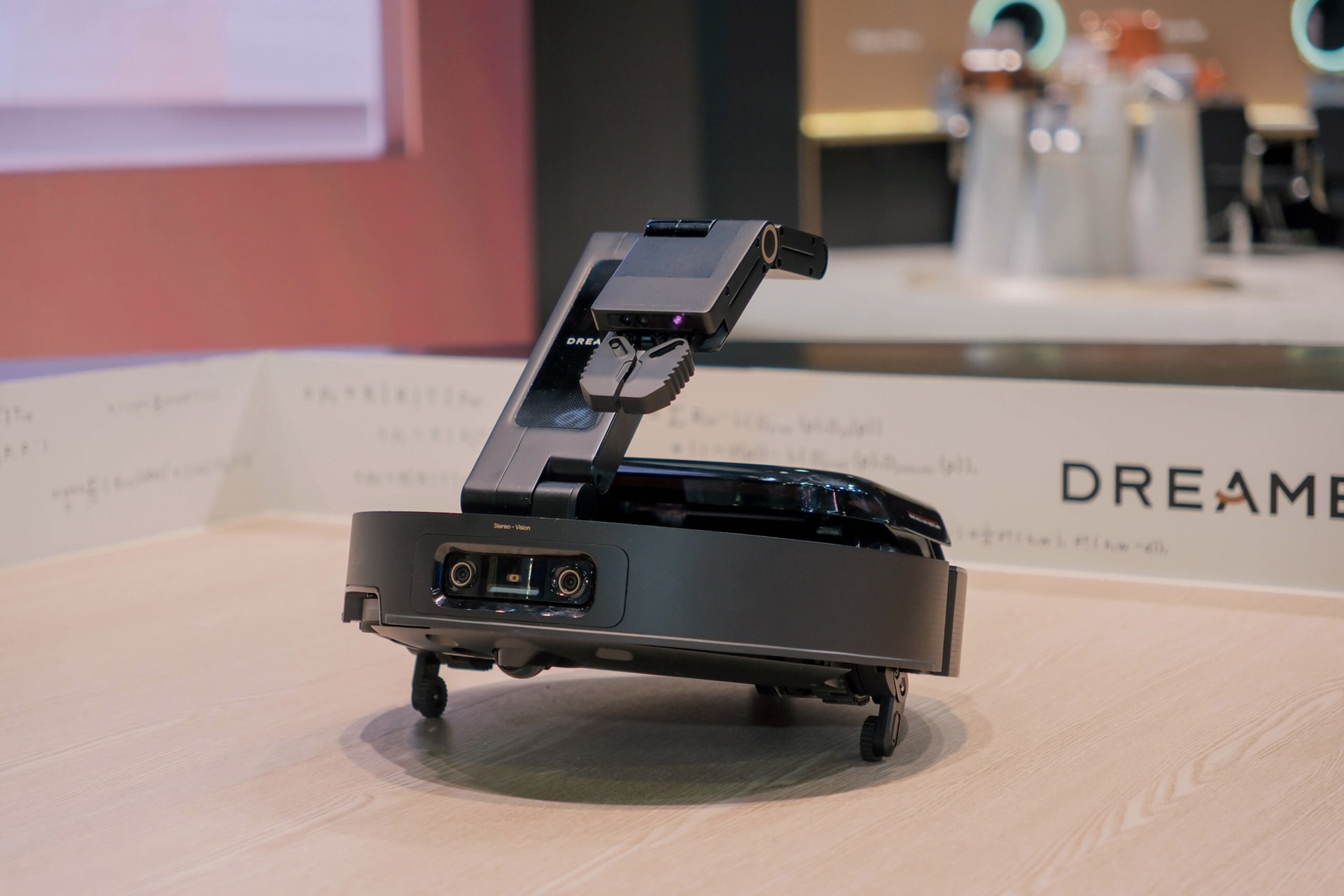After officially announcing its entry into the major home appliance market, Dreame took center stage at this year’s Appliance & Electronics World Expo (AWE), where it reserved an 800-square-meter booth. Alongside its signature robot vacuums and floor washers, the company unveiled a full suite of smart home products—including its first air conditioner, refrigerator, washing machine, and kitchen appliances.
This expansion marks another step in Dreame’s evolving product roadmap, following last year’s speculation about its potential move into the automotive space.
At the same expo, competitors made their own plays. Roborock debuted a washer-dryer combo with a full-touchscreen interface—touted as a global first. Tineco introduced a cooking appliance called “Shiwan Tiangong,” while Ecovacs showcased its latest lawn-mowing robot.
The broader smart cleaning appliance market, however, has entered a cooling phase. According to China Market Monitor and IDC, China’s robot vacuum market shrank by 0.6% year-on-year in the first half of 2023. Globally, shipments inched up from 5.5 million to 5.9 million units between Q4 2023 and Q4 2024, but growth has clearly slowed.
One reason: the core user base has largely been tapped. With competitors undercutting one another, price wars have become the norm. Features across brands are increasingly similar, and many devices fail to deliver on the promise of smarter, more personalized experiences—dampening enthusiasm for upgrades and repeat purchases.
In this context, expanding into adjacent product categories has emerged as one of the few viable paths to sustained growth—and Dreame is far from alone in taking that route.
A bigger market, a higher bar
The major appliance sector is massive—and fiercely competitive. Despite years of smart upgrades, many products still underwhelm. Consumers often complain that these so-called intelligent features fall short in practice.
Smart refrigerators, for instance, frequently suffer from clunky user interfaces, sluggish response times, and poor voice recognition in noisy environments. Ingredient-recognition features, once heralded as a breakthrough, often misidentify items and contribute to food waste.
These frustrations are widely shared. On Chinese social media, debate continues over whether smart fridges are worthwhile at all—or simply overpriced gimmicks.
Meanwhile, Dreame’s traditional product lines—robot vacuums and floor washers—are nearing their ceiling. According to Statista, household penetration of robot vacuums in China will only reach 6% in 2024. Despite growing awareness, the category remains niche compared to traditional appliances, which enjoy far higher adoption rates.
The difference in market size is striking. Data from All View Cloud (AVC) shows that retail sales for all household appliances in China (excluding 3C products) hit RMB 907.1 billion (USD 127 billion) in 2024, up 6.4% year-on-year.
But scale comes with its own set of challenges. Many incumbents, while dominant in market share, lag in R&D. This has resulted in a sea of lookalike products with limited differentiation. Simultaneously, shifts in retail and distribution have left legacy players struggling to adapt, opening the door for more agile entrants.
For companies like Dreame and Roborock, the moment is ripe.
As smart cleaning appliances plateau, brands are actively seeking new growth levers. Diversifying their portfolios—across products, use cases, and sales channels—reduces over-reliance on any one category and builds long-term resilience.
A shared tech foundation
At first glance, major appliances might seem like a departure from Dreame’s core business. But its expansion is less a leap than a pivot—repurposing existing technology for new applications.
Dreame’s foundation spans four smart cleaning categories: robot vacuums, floor washers, cordless vacuums, and high-speed hair dryers. These products rely on core capabilities such as high-speed motors, algorithms, and precision engineering in fluid dynamics and aerodynamics.

Motors are a prime example. As the power source for nearly every home appliance, they offer wide cross-category utility. Dreame was the first company worldwide to exceed 200,000 revolutions per minute (RPM) in motor speed. That high performance underpins products like the Dreame Z50 Station vacuum, which delivers 350 air watts of suction—enough to clean tough messes like oil stains and coffee spills.
In the kitchen, the same motor tech is now being applied to range hoods. Traditional units often force consumers to choose between strong airflow and low noise. Dreame’s motors, thanks to their high RPM and compact design, deliver efficient ventilation while keeping noise and bulk in check.
Dreame has also adapted robotic arm technology from its vacuum robots for use in its new line of air conditioners. While conventional units offer limited, fixed airflow patterns, Dreame’s redesigned models—equipped with mechanical arms—provide more precise airflow control and enhanced cooling comfort.

These core systems, proven in Dreame’s cleaning products, are now being integrated into refrigerators, air conditioners, and washing machines. This not only reduces R&D costs but also shortens product development cycles, enabling faster iteration.
Higher prices and longer purchase cycles define the major appliance segment. Consumers often want to test products in person, and installation and after-sales support are critical to the buying experience.
Here, Dreame benefits from an existing commercial footprint. It operates more than 5,500 offline stores across over 100 countries and regions, with presence in retail chains like Walmart, Carrefour, Suning.com, and Gome. Internationally, it partners with distributors such as MSD, Boulanger, and Coolblue.
By extending its tech stack into new product lines, Dreame creates a compounding effect—where strengths in R&D, manufacturing, and distribution reinforce one another across categories.
Market timing also works in its favor. Backed by government subsidies and green consumption incentives, China’s home appliance sector saw both sales volume and average prices rise in 2024. Retail sales in the first three quarters of the year even exceeded pre-pandemic peaks from 2019.
Factor in a typical replacement cycle of 10–12 years, and it’s clear the global market is entering a major refresh phase. For companies like Dreame, that opens the door to win share—if they can execute with precision.
KrASIA Connection features translated and adapted content that was originally published by 36Kr. This article was written by Huang Nan for 36Kr.

